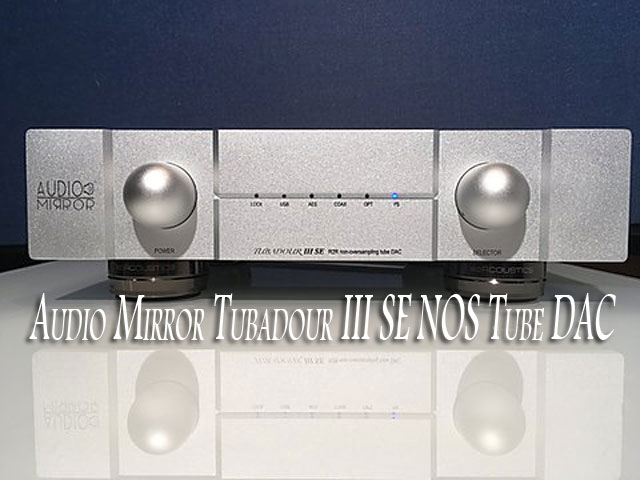
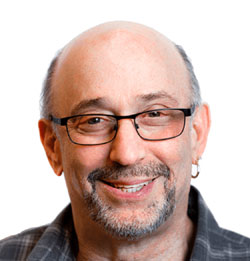 In the last seven years, I have had numerous DACs in-house for listening and reviewing purposes. They ranged in price from $1,200 up to $25,000, and came from such luminaries as Playback Design, Ensemble, Accustic Arts, Eximus, Esoteric, dCS, PS Audio, MSB, Lab 12, and Mhdt Labs, to mention a few. I have come to the following conclusions: First, the 24-bit/192 kHz format or higher resolution formats (DSD/MQA) playback fidelity is not superior to 16/44.1 kHz or 16/48 kHz formats. The higher resolution formats are different but not necessarily superior. Aspects of music that are very important to me, such as harmonic structure/timbres, three-dimensional imaging, and a sense of air or space around individual instruments that lead me to relax into the music and enjoy the emotional content were often lacking in the DACs based on the higher resolution formats. Second, the specific DAC chips that were used contributed approximately 20 to 30 percent of the total sonic signature of that DAC. The vast majority of the performance of each DAC was determined by the quality of its power supply, analog conversation circuit, and overall internal parts and build quality. Third, R-2R ladder DACs require no filtering and do no up-sampling/oversampling, very often offer the most natural/organic presentation of the music, if the above-mentioned power supply, analog conversation circuit, and build quality are first rate. Finally, to my ears, DACs that include a tube buffer section, often offer more liquidity, the density of timbres/tonality, and three-dimensional imaging than DACs that are based on solid-state conversation circuits. Yes, these solid-state DACs offer great transparency and micro-details, but my experience is that they have a tendency to thin out the textural weight and slightly “wash out” the complexity of timbres and tonality compared to the tube-buffered DACs.
In the last seven years, I have had numerous DACs in-house for listening and reviewing purposes. They ranged in price from $1,200 up to $25,000, and came from such luminaries as Playback Design, Ensemble, Accustic Arts, Eximus, Esoteric, dCS, PS Audio, MSB, Lab 12, and Mhdt Labs, to mention a few. I have come to the following conclusions: First, the 24-bit/192 kHz format or higher resolution formats (DSD/MQA) playback fidelity is not superior to 16/44.1 kHz or 16/48 kHz formats. The higher resolution formats are different but not necessarily superior. Aspects of music that are very important to me, such as harmonic structure/timbres, three-dimensional imaging, and a sense of air or space around individual instruments that lead me to relax into the music and enjoy the emotional content were often lacking in the DACs based on the higher resolution formats. Second, the specific DAC chips that were used contributed approximately 20 to 30 percent of the total sonic signature of that DAC. The vast majority of the performance of each DAC was determined by the quality of its power supply, analog conversation circuit, and overall internal parts and build quality. Third, R-2R ladder DACs require no filtering and do no up-sampling/oversampling, very often offer the most natural/organic presentation of the music, if the above-mentioned power supply, analog conversation circuit, and build quality are first rate. Finally, to my ears, DACs that include a tube buffer section, often offer more liquidity, the density of timbres/tonality, and three-dimensional imaging than DACs that are based on solid-state conversation circuits. Yes, these solid-state DACs offer great transparency and micro-details, but my experience is that they have a tendency to thin out the textural weight and slightly “wash out” the complexity of timbres and tonality compared to the tube-buffered DACs.
 I received an email from Vladimir Bazelkov, the founder/designer of Audio Mirror, who wanted to know if I would be interested in reviewing his new reference level NOS R-2 ladder tube-based DAC, the Tubadour III NOS SE, which retails for $2500. Based on my above-stated experiences and personal taste in digital front-ends it was no surprise that I was quite interested in reviewing it. Mr. Bazelkov had a long history in tube-based high-end electronics in his homeland of Bulgaria, and come to the U.S. in 2000 and started his Audio Mirror company that is now located in Eden Prairie, MN. I was aware of his company for two reasons. First, on many audio websites, he had received many compliments regarding his tube-based equipment and excellent customer service. Second, the highly respected “tube maven” reviewer, Dick Olsher had in 2018 reviewed the Audio Mirror Reflection 45W SET Monoblock amplifier for The Absolute Sound magazine and raved about its performance, build quality, and it’s a very reasonable price compared to other much more expensive, but not better-sounding competition. There are two versions of the Tubadour DAC. The Tubadour III sells for $1,500. It is based on the same DAC chipset and overall topography as its more upscale sibling the Tubadour III SE.
I received an email from Vladimir Bazelkov, the founder/designer of Audio Mirror, who wanted to know if I would be interested in reviewing his new reference level NOS R-2 ladder tube-based DAC, the Tubadour III NOS SE, which retails for $2500. Based on my above-stated experiences and personal taste in digital front-ends it was no surprise that I was quite interested in reviewing it. Mr. Bazelkov had a long history in tube-based high-end electronics in his homeland of Bulgaria, and come to the U.S. in 2000 and started his Audio Mirror company that is now located in Eden Prairie, MN. I was aware of his company for two reasons. First, on many audio websites, he had received many compliments regarding his tube-based equipment and excellent customer service. Second, the highly respected “tube maven” reviewer, Dick Olsher had in 2018 reviewed the Audio Mirror Reflection 45W SET Monoblock amplifier for The Absolute Sound magazine and raved about its performance, build quality, and it’s a very reasonable price compared to other much more expensive, but not better-sounding competition. There are two versions of the Tubadour DAC. The Tubadour III sells for $1,500. It is based on the same DAC chipset and overall topography as its more upscale sibling the Tubadour III SE.
So, what does the upcharge of $1,000 get you in the Tubadour III SE? Plenty, based on the following additions and upgrades:
1) Dueland capacitors on the signal path.
2) Z-Foil “naked” Vishay resistors in the IV and tube section.
3) Oscon capacitors in the power supplies to the USB and 12 S inputs.
4) IEC power inlet is a Furutech-Gold unit.
5) IsoAcoustic GAIA vibration-absorbing/isolation feet (set of four).
 Vladimir, as a listener and as the designer made two choices for both of his DACs based on how he experiences music. After experimenting with virtually all the NOS DAC chips he came to the conclusion that the Analog Devices AD 1865 N-K flagship DAC chip was the most musical and natural-sounding compared to the rest of those other DAC chips. An interesting side note is that he must have the same “taste” in how he experiences the illusion of real music as the founder of Audio Note of England, because in that company’s reference level and most expensive DACs, they use the same DAC chip. He also made a choice to use in the tube section of the Tubadour III SE pairs of NOS Sylvania 5977 subminiature tubes (two per channel and these are soldered into a set of pins that you insert into the tube sockets) because he believes that they offer the most musical presentation compared to other NOS tubes in his design. I extensively tube rolled my best NOS highly acclaimed 6922’s, 396’s and other variants. However, Vladimir was right in making these very inexpensive and attainable “mini-tubes” his personal favorite. The overall performance of the Tubadour III SE did respond to my extensive tube rolling experiment, but by far the most musical and enchanting presentation took place when using the NOS Sylvania 5977 tubes.
Vladimir, as a listener and as the designer made two choices for both of his DACs based on how he experiences music. After experimenting with virtually all the NOS DAC chips he came to the conclusion that the Analog Devices AD 1865 N-K flagship DAC chip was the most musical and natural-sounding compared to the rest of those other DAC chips. An interesting side note is that he must have the same “taste” in how he experiences the illusion of real music as the founder of Audio Note of England, because in that company’s reference level and most expensive DACs, they use the same DAC chip. He also made a choice to use in the tube section of the Tubadour III SE pairs of NOS Sylvania 5977 subminiature tubes (two per channel and these are soldered into a set of pins that you insert into the tube sockets) because he believes that they offer the most musical presentation compared to other NOS tubes in his design. I extensively tube rolled my best NOS highly acclaimed 6922’s, 396’s and other variants. However, Vladimir was right in making these very inexpensive and attainable “mini-tubes” his personal favorite. The overall performance of the Tubadour III SE did respond to my extensive tube rolling experiment, but by far the most musical and enchanting presentation took place when using the NOS Sylvania 5977 tubes.
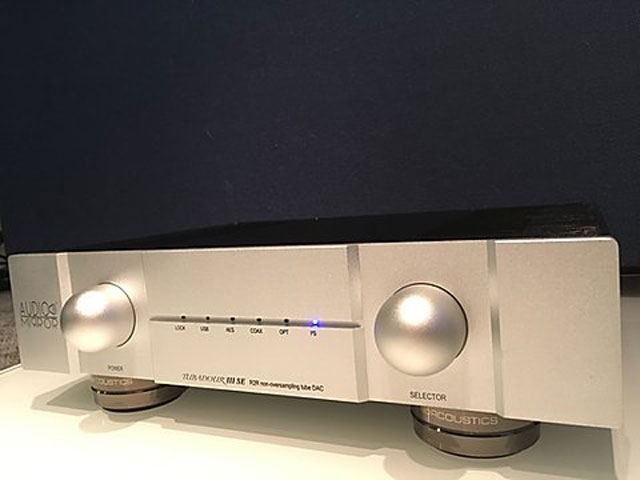
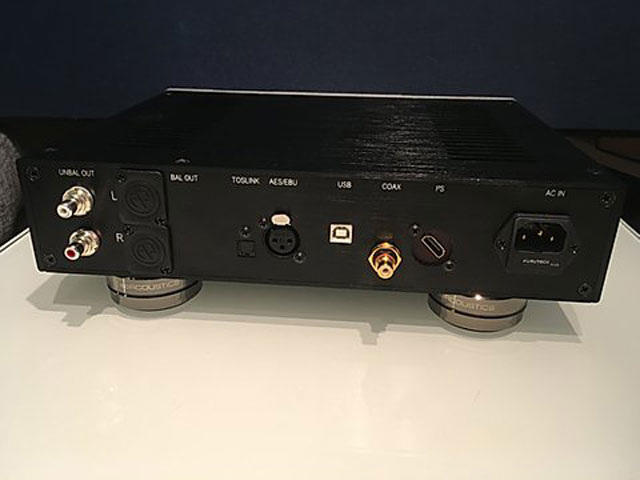
The Tubadour III SE DAC’s dimensions are 13 inches in width, 12 inches in depth, and 3 inches in height. On the front plate, there are two knobs flanking a row of small LEDs that indicate which input is engaged and that the DAC has locked on to. The left knob is the on/off switch and the right knob controls which input you want to hook/lock on to receive the bitstream. On the back are the IEC, SPDIF, Toslink, AES, USB, and I²S.
Search Results
Web results
inputs. The DAC’s outputs are RCA single-ended. However, balanced outputs can be ordered as an option. The overall appearance of the Tubadour III SE DAC is quite attractive in that the thick sliver faceplate has a simple but “handsome” look to it. The IsoAcoustic GAIA isolation footers also give this DAC a bit of “bling” and a sense of how solid it is in its construction.
 With my first selection being baritone saxophonist Gerry Mulligan’s classic album, Night Lights, I knew I was in for a sonic treat with the Tubadour III SE in my system. The first aspect that stood out for me was the absolute purity of the timbres of not only Mulligan’s baritone saxophone but how all the instruments (Jim Hall’s guitar/Art Farmer’s flugelhorn and trumpet/Bob Brookmeyer’s trombone) unique tonal colors were rendered in a delicate and lovely manner. This was not some type of euphonic coloration, but a beautiful density of tone colors that you would hear in live acoustic music. The top-end frequencies had a beautiful sparkle and their decays were easy to hear as they disappeared into the air of the recording studio.
With my first selection being baritone saxophonist Gerry Mulligan’s classic album, Night Lights, I knew I was in for a sonic treat with the Tubadour III SE in my system. The first aspect that stood out for me was the absolute purity of the timbres of not only Mulligan’s baritone saxophone but how all the instruments (Jim Hall’s guitar/Art Farmer’s flugelhorn and trumpet/Bob Brookmeyer’s trombone) unique tonal colors were rendered in a delicate and lovely manner. This was not some type of euphonic coloration, but a beautiful density of tone colors that you would hear in live acoustic music. The top-end frequencies had a beautiful sparkle and their decays were easy to hear as they disappeared into the air of the recording studio.
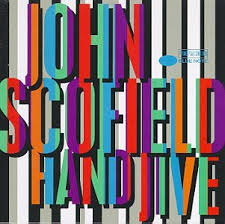 Lest you think because of what I shared already with my first selection that the Tubadour III SE DAC is all “beauty” with no “beast” of overall explosive macro-dynamics or extended bass frequencies or control, read on! When I cued up the great jazz/fusion guitarist John Scofield’s album, Hand Jive, which is a great funk/blues-influenced jazz outing, Scofield’s hot extended and somewhat distorted guitar riffs exploded out of my system’s speakers with an intense dynamic impact. Also, the bass frequencies of Larry Golding’s B3 Hammond bass pedals were taut with great impact that pressurized my room in a realistic manner. The Tubadour III SE has the ability to create tremendous overall dynamics, and yet presents these peaks and explosive moments in the music with ease and control. It seems that whatever music I throw at this DAC (hip-hop/electronic house music/rap/classical pipe organ) to evaluate its overall dynamics and the low-frequency response it never sounded strained or lost its sense of effortless/unlimited dynamics. I would attribute this to its excellent internal power supply.
Lest you think because of what I shared already with my first selection that the Tubadour III SE DAC is all “beauty” with no “beast” of overall explosive macro-dynamics or extended bass frequencies or control, read on! When I cued up the great jazz/fusion guitarist John Scofield’s album, Hand Jive, which is a great funk/blues-influenced jazz outing, Scofield’s hot extended and somewhat distorted guitar riffs exploded out of my system’s speakers with an intense dynamic impact. Also, the bass frequencies of Larry Golding’s B3 Hammond bass pedals were taut with great impact that pressurized my room in a realistic manner. The Tubadour III SE has the ability to create tremendous overall dynamics, and yet presents these peaks and explosive moments in the music with ease and control. It seems that whatever music I throw at this DAC (hip-hop/electronic house music/rap/classical pipe organ) to evaluate its overall dynamics and the low-frequency response it never sounded strained or lost its sense of effortless/unlimited dynamics. I would attribute this to its excellent internal power supply.
 My final selection is one of my favorite albums, Body and Soul, by the legendary Billie Holiday. On this intimate soulful recording, she is backed by a small band of some of the best jazz musicians of that time (Ben Webster on tenor sax, Barney Kesselon guitar, Harry “Sweets” Edison on trumpet, and Jimmy Rowles on piano). I love Ms. Holiday’s singing and the backing by her fellow musician’s versions of “Body and Soul,” “Darn That Dream,” and “Gee, Baby Ain’t I Good to You?” This recording can test how well a DAC can reproduce the spatial qualities of the studio venue where it was recorded, along with how well it will do at accurately locating Ms. Holiday’s position among her band. The Tubadour III SE outperformed my excellent Mhdt Labs Orchid DAC in both these areas. The soundstage opened up even more with precise placement of the different players in that recording studio. Billy Holiday’s presence was rendered in that space with great palpability as if she was a “sonic hologram” performing in that acoustic space.
My final selection is one of my favorite albums, Body and Soul, by the legendary Billie Holiday. On this intimate soulful recording, she is backed by a small band of some of the best jazz musicians of that time (Ben Webster on tenor sax, Barney Kesselon guitar, Harry “Sweets” Edison on trumpet, and Jimmy Rowles on piano). I love Ms. Holiday’s singing and the backing by her fellow musician’s versions of “Body and Soul,” “Darn That Dream,” and “Gee, Baby Ain’t I Good to You?” This recording can test how well a DAC can reproduce the spatial qualities of the studio venue where it was recorded, along with how well it will do at accurately locating Ms. Holiday’s position among her band. The Tubadour III SE outperformed my excellent Mhdt Labs Orchid DAC in both these areas. The soundstage opened up even more with precise placement of the different players in that recording studio. Billy Holiday’s presence was rendered in that space with great palpability as if she was a “sonic hologram” performing in that acoustic space.
The Tubadour III SE DAC is not inexpensive at its $2,500 retail price. However, when you figure in the quality of its internal parts, the build quality, and most importantly its wonderful ability to reproduce music, dare I say, in an analog fashion regarding its overall liquidity, dense timbres/tonality/colors and “ease” of presentation, it’s a terrific bargain. I don’t think this DAC is just good for its price range. Regardless, of its reasonable cost the Tubadour III SE DAC will compete with and will out-perform many DACs that cost tremendous amounts more on the market today. This DAC will be staying in my system. It is the new “benchmark” for me based on the details stated in the review. If you are in the market for a DAC, I highly suggest that you audition the Tubadour III SE, before you make your next DAC purchase for your system.


terry london
Specifications:
Price:$2,500
S/PDIF, AES 44.1 – 192kHz
Optical/Toslink 44.1 – 96kHz
USB, I2S, PCM 44.1 – 384kHz
DSD – converted by player to PCM “on the fly”
Bit depth:
Up to 24 bit over S/PDIF, AES, Toslink
Up to 32 bit over USB and I2S
Options:
optional balanced output
optional I2S input
Dimensions:
13 x 12 x 3 inches
Address:
Audio Mirror
7236 Ticonderoga Trl.
Eden Prairie MN 55346
email: contact@audiomirror.com
Associated Equipment:
Digital front end
Mhdt Lab Orchid DAC
Lab 12 DAC
Threshold DAC 1e
Jay’s Audio MK-II CD transport
CEC MK-III CD transport
Amplification
Coda 07x preampilfier
Coda NO.8 amplifier
Coda NO.16 amplifier
Pass Labs XA-25 amplifier
Triode Labs SET 2A3 tube amplifier
Threshold 550e amplifier
Linear Tube Audio reference preamplifier
Loudspeakers
Tekton Design Ulfberth & Perfect SET
NSMT Model 100
Accessories
Full looms of Black Cat Coppertone wires
Krolo Design reference rack & footers
Dignity Audio PPT-1500 isolation transformer
Audio Archon power cords
Stereo Times Masthead
Publisher/Founder
Clement Perry
Editor
Dave Thomas
Senior Editors
Frank Alles, Mike Girardi, Russell Lichter, Terry London, Moreno Mitchell, Paul Szabady, Bill Wells, Mike Wright, and Stephen Yan,
Current Contributors
David Abramson, Tim Barrall, Dave Allison, Ron Cook, Lewis Dardick, John Hoffman, Dan Secula, Don Shaulis, Greg Simmons, Eric Teh, Greg Voth, Richard Willie, Ed Van Winkle, Rob Dockery, Richard Doron, and Daveed Turek
Site Management Clement Perry
Ad Designer: Martin Perry





Be the first to comment on: